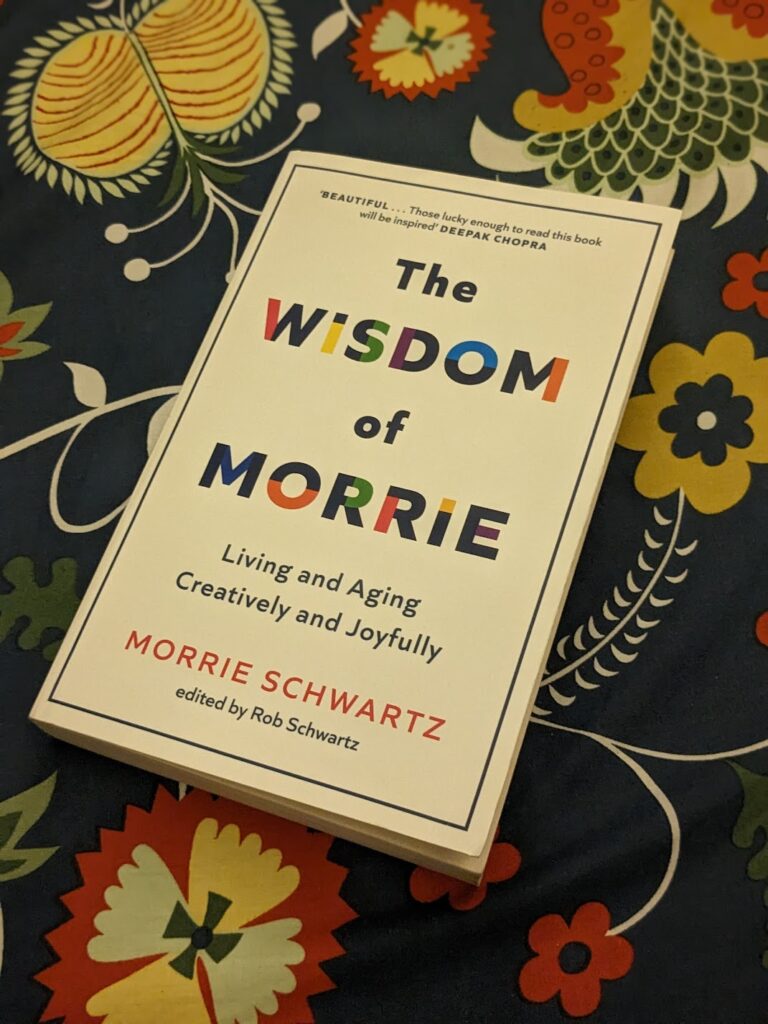Morrie Schwartz, Rob Schwartz
Such is the impression left by Mitch Albom’s “Tuesdays with Morrie” that more than a decade later, the moment I realised it was the same Morrie, I had to buy The Wisdom of Morrie. Rob Schwartz, son of Morrie Schwartz discovered the manuscript, written during 1988-92, in the early 2000s and with the help of his mother, edited it.
While the book is full of insights that are useful at any stage of life, by the author’s own admission, it speaks to the sixty five year old and beyond. But I am glad I read it now. One of the things that I have complained about is the way mid life almost blindsided me, with the physical, mental, and emotional changes it brought. This book is a great primer for the next stage, and I will most definitely read it again in another 15-20 years.
The book is divided into nine chapters, each of which delves into a specific domain. It begins with one’s own awareness of aging and impending death, and the contradictions one faces at later stages in life – some things become easier, and some more difficult, you want some things (solitude) and their opposite (company) – and how one can find an emotional balance.
It then moves on to how we can expand our awareness, which according to Morrie is the summation of the many tools one requires to age well and become the best version of oneself. He also calls out ageism and agecasting, and notes how one can do it to self as well.
The next chapter is where the book gets into great detail on the actual issues people face as they age, and how to handle them. This is the longest chapter, and rightfully so. The following chapter continues this theme – how to come to terms with all the baggage we have accumulated thus far. The last two chapters are perspectives on how to age well, and become the best version of oneself.
Morrie not only uses the knowledge he had amassed from his work as a psychologist and teacher, but effectively channels the empathy and reassurance of someone who is himself living through it, and knows many others who do. This puts him in perfect position to not only understand the challenges, but also provide ways to overcome them. Not in theory, but in actual practice. He delivers this with sensitivity and compassion, using logic as well as anecdotal examples.
In the Hindu ashrama concept, we have vanaprastha and sanyasa. This is a great resource for anyone in these stages. And for those others who want a sneak preview.
Insight
Fear is often the mirror image of need. For example, our need for self-preservation is the other side of our fear of physical injury.


Leave a Reply